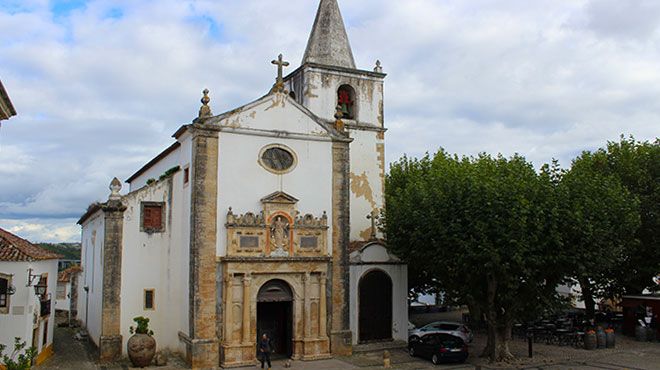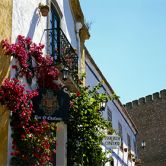Igreja de Santa Maria, Matriz de Óbidos

Monuments
Marian Devotion in a village of queens.
According to tradition, the origin of this church dates back to the Visigothic period, having been converted into a mosque during the Muslim period and converted to Christianity after D. Afonso Henriques conquered the village in 1148, consecrating it to Marian Devotion.
From 1210, the town of Óbidos became part of the Casa das Rainhas, benefiting from the artistic and religious patronage of the Crown for the next six hundred years. The various modifications in the Church of Saint Mary are testament to this fact.
The temple that today sits in the Santa Maria Square, at the bottom of the Rua Direita main street, dates from the 16th century and was built by the initiative of Queen D. Leonor, wife of D. João II. It was in this church that, on August 15, 1441, the infant D. Afonso (later King D. Afonso V of Portugal) married his cousin D. Isabel, at the ages of ten and eight. From 1571, given its state of ruin, it was thoroughly renovated by order of Queen D. Catherine of Austria, to its present configuration.
At the entrance, on the Mannerist portal, one sees an image of Our Lady of the Assumption, patroness of the parish. Next to the altar the Renaissance tomb of D. João de Noronha ("The Lad"), captain of Óbidos in the 16th century, deserves to be admired. It is a masterpiece of Renaissance tomb sculptures, attributed to Frenchman Nicolau Chanterenne. In addition, one can observe paintings by Baltazar Gomes Figueira and the famous Josefa de Óbidos (1634-1684), which combined the profane and the sacred in atmospheres of soft sensuality and mysticism, as in the altarpiece dated 1611, which represents the Mystic Marriage of Santa Catarina, on show in the sacristy. Much of the work of this remarkable painter (and of the church's collection) is preserved in museums, particularly in Óbidos. The walls, covered top to bottom with 17th century tiles and painted wood, create a beautiful decorative effect, designed by Francisco de Azevedo Caminha, also in the 17th century.
In the square to the front of the church, the stone pillory is decorated with a fishing net. D. Leonor wanted to pay tribute to the fishermen who gathered the body of her son D. Afonso, who had died following a horse fall near the Tagus, in a net.
2510-001 Óbidos
Octobre - March: 9.30am-12.30pm / 2.30pm-5pm
April - Septembre: 9.30am-12.30pm / 2.30pm-7pm










 Explore
Explore 
 Remember and Share
Remember and Share 


